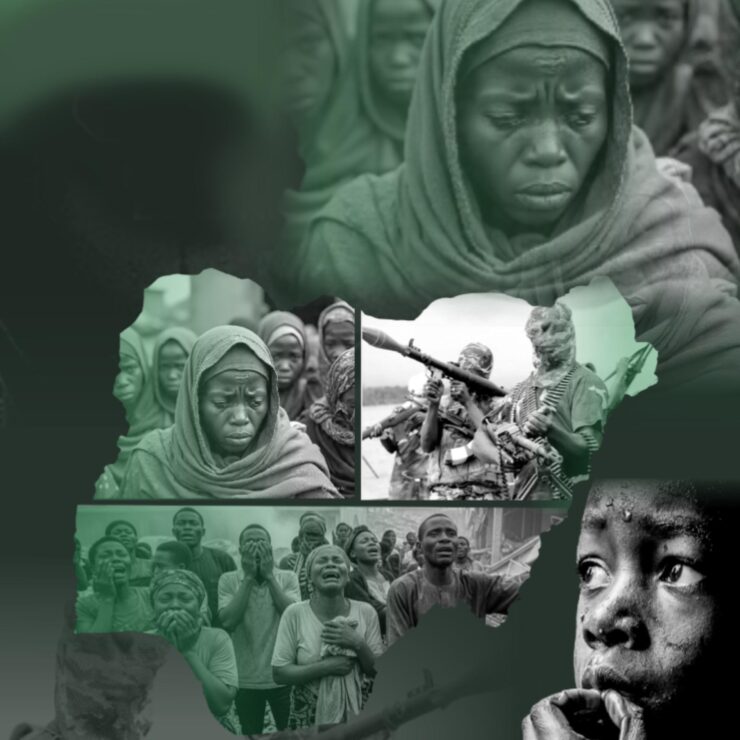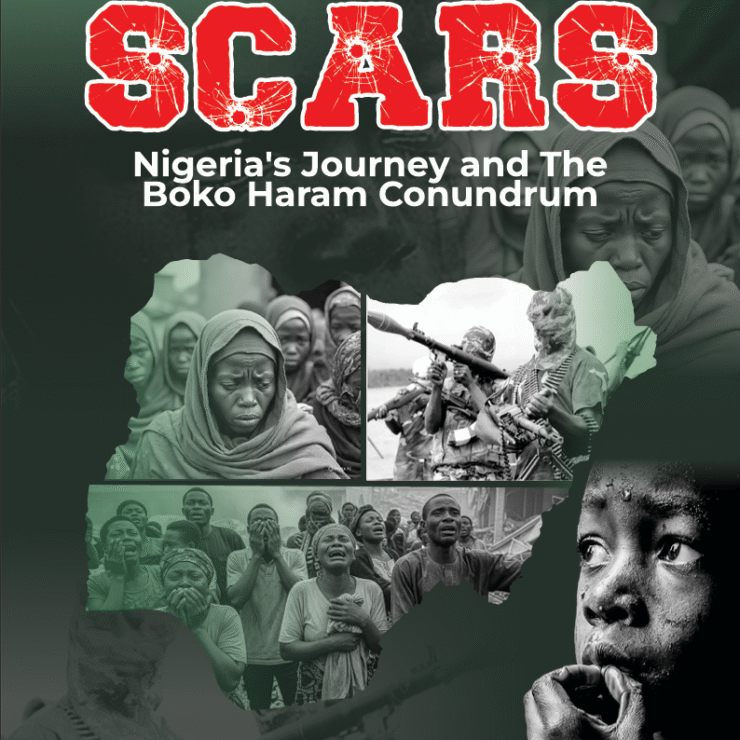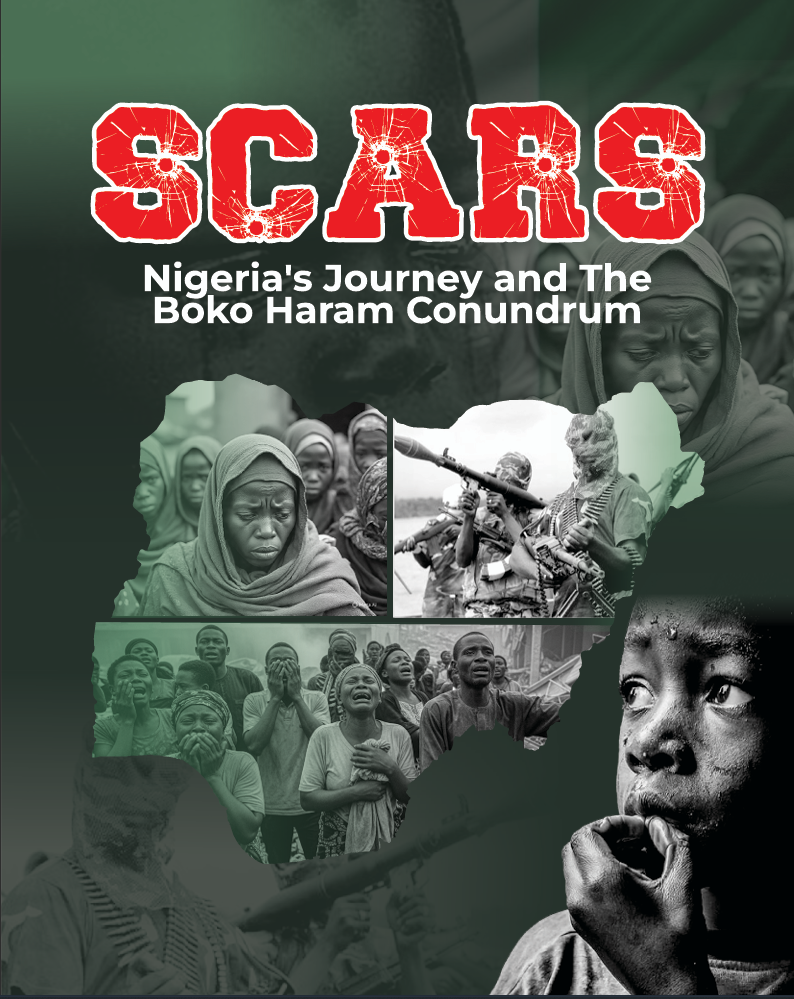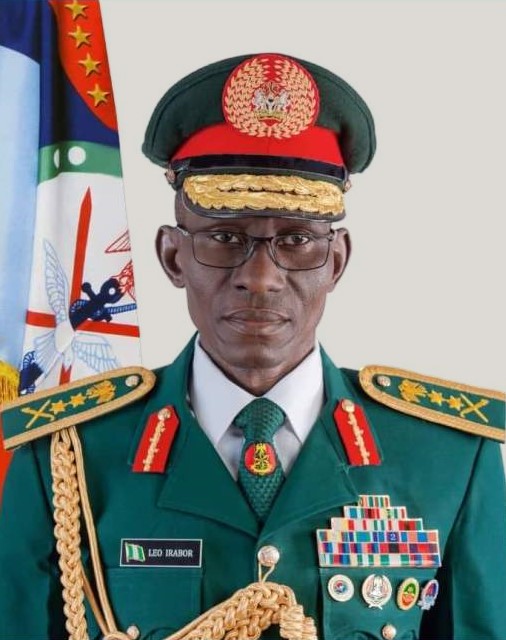The book, ‘SCARS: Nigeria’s Journey and The Boko Haram Conundrum, attempts to chronicle the diverse impact of Boko Haram on the Nigerian state. It is a catalogue of facts on Boko Haram gleaned from the first-hand experience I gained during my military command of the operations to address the threat of terrorism and insurgency in the North East region of Nigeria. It equally speaks to the fears of a nation and its people who are groaning from the shackles of under-development and offers plausible insights why political actors from different geo-political zones of the country have continued to harbour prejudices against each other, to the detriment of unity, peace and progress of the nation. The offshoot of which, in the main, is insecurity expressed in various ways, including Boko Haram insurgency.
The book situates the challenges before the nation and offered suggestions on how they could be managed. The book is arranged in three parts, namely Part One: The Ghost that Lives with us; Part Two: The Boko Haram Conundrum; and Part Three: Eyes on Tomorrow; all in Fourteen chapters and a Concluding Note.




Chapter 1
‘The Context’, sets the tone for understanding the challenge of insecurity in Nigeria and Boko Haram in particular. It builds on the experiences as seen from the frontlines whilst commanding the operations in North East Nigeria as well as a brief narration of the teething problems of Independence Nigeria and their implication on current national security setting. The assessment is that the current military-centric approach to addressing security challenges, as important as it is, should pivot, with a renewed mindset, to a more inclusive strategy that harnesses the strengths of non-military elements of state power.
Chapter 2
‘When the Shield Becomes the Sword Nigeria’s Security Dilemma’ analysed the cascade of socio-political and socio-economic interactions and how they shape the country’s security landscape. The issues raised in the chapter are viewed as the Big Elephant in the room. The chapter discussed the roots of the pain and anguish of the nation from the early formation of Nigeria, political developments before and after Independence, leading up to the fall of the First Republic and the eventual brutal civil war. The chapter took the historical context to establish that the past has implications for the present, part of which Boko Haram compounded. It identified rancorous and acrimonious politicking as major impediment to peace, unity and progress of the country.
Chapter 3
The matters arising from the fallouts of the collapse of the first Republic have been analysed in Chapter 3 titled ‘The Aftermath: Echoes of Uncertainty’. The chapter explored the circumstances surrounding the fall of the first Republic and the outcome of civil war. This was done with a view to analysing the factors that are fundamental to cases of insecurity in Nigeria as we seek to proffer enduring solutions to the country’s multifaceted challenges. The chapter identified three dominant issues upon which the manifestations of instability in the Country are anchored since the early days of post-independence Nigeria. These are struggle for the control of power and authority of State, revenue allocation (sharing of the proverbial ‘National Cake’), and fear of domination by one group over the other. It argued that these issues have given rise to differences among the federating entities of Nigeria in various shapes and forms. The result being manipulations of demography, loathing of the military and heightening animosity, among other issues. The impact of this setting across various regions of the country was explained using the Dead Horse Theory. The negative impacts as a result of the inordinate activities of the various interest groups were discussed. The chapter equally identified the undercurrent of disunity and insecurity in the country which are deeply rooted in socio-political issues such as the ethnic/regional divisions, and religious intolerance. These are assessed to have stemmed from systemic structural weaknesses, occasioned by the identified socio-political issues.
Chapter 4
Chapter 4 looks at ‘Where Borders Breathe: The Pulse of North Eastern Nigeria’. This is so because, the zone is where the Boko Haram activities are mostly domiciled. The import is to assist in understanding the dynamics at play that have implications for various lines of operations being conducted by the government forces. The chapter examined geography and history of its people, power structure, socio-economic landscape, cultural and religious festivities, as well as information and communication systems. This perspective took into cognizance that, these factors in parts, combine to affect the state of insecurity as well as measures to address it. Furthermore, the chapter identified attractions of insecurity in the NE region, revealing that the poverty levels are high, and the economic opportunities are limited, among several other factors.
Chapter 5
Chapter 5 gives a brief ‘Brief Overview of Boko Haram’, with emphasis on its background, origin, organization and ideology as well as the early leadership profile of the group. The group evolved by latching on religious fervour and the sensitivity to religious worships in deceiving unsuspecting Nigerian public. The analysis of the chapter is to bring out the linkage to actions and inactions of governments and other stakeholders in nurturing the monster.
Chapter 6
‘the Irony of Boko Haram’, establishes that the group is an ‘ill wind’ that is blowing and affecting every interest group negatively. It captured Boko Haram elements as merchants of terror and evil. The chapter observed that given the scale of carnage, all Nigerians and, indeed, men of goodwill, have come to terms with the reality of Boko Haram’s ignoble adventures, irrespective of their socio-cultural, political, religious or ideological persuasions.
Chapter 7
The gory tales and manifestations which constitute the ‘scars’ that the book derives its title, are chronicled in chapters 7 – 10. In Chapter 7, ‘The Beastly Boko Haram’, the vicious nature of Boko Haram through violent, beastly, and ruthless killings and destructions were aptly captured. The group was assessed as a harbinger of tears, sorrows and blood through unbridled savagery and improvised explosive devices attacks, targeted killings, abductions in schools, destruction of infrastructures amongst others.
Chapter 8
The ‘Deeper Scars of Boko Haram war ’ were documented in Chapter 8. They speak to the untold hardship and sufferings brought upon all, especially the inhabitants of the NE of Nigeria. As at 2020, UNDP report indicated that over 1.8 million people were displaced in the NE region, and that nearly 350,000 deaths, with about 314,000 of those from indirect causes, have occurred. This is aside the emotional trauma and other pains brought about by the Boko Haram misadventure.
Chapter 9
‘The Complexity of Response to Boko Haram’, focused on the response of the federal government to the challenge and the outcome. The chapter equally noted some key issues on the response mechanism, observing that the contemporary security environment, the world over, is Volatile, Uncertain, Complex and Ambiguous (VUCA). Thus, the asymmetric nature of the challenge presented some peculiarities across all domains of operation. The chapter further opined on why Boko Haram activities have persisted for over a decade, indicating that the ideology of the group is anchored on the indoctrination which focuses on a cause for ‘eternal’ glory. This is in addition to the tacit support the group receives locally and internationally, as well as limitations at the political strategic level response.
Chapter 10
The ‘Political Dynamics of Boko Haram Crisis and Nigeria’s Sovereignty’ were discussed in Chapter 10. It touched on the indirect attack on Nigeria from various quarters and by all kinds of mechanism. Organized negative media reports that became rampant, including manifest obsession for negative, acerbic and sensational news on the war effort, were analysed. These were intended to elicit a paradigm shift on the current socio-political and socio-economic engagements within Nigeria as we seek for viable options to resolving the challenges militating against unity, peace, security and development of the country.
Chapter 11
‘General Outlook of the Security Landscape.’ This was done on the background that helps to assess the future in order to proffer viable approaches for enhanced peace and security. The chapter showed how insecurity have left complex and devastating imprints on the social, economic, and political landscape of all geo-political zones.
Chapter 12
The Book then examined some of the ‘Drivers of Extremist Activities’ in Chapter 12. The chapter delved into the various dimensions of political intricacies and setbacks that cast shadows on the fight against terrorism.
Chapter 13
‘Learning the Language of Peace’ sought to shed light on better options for resolving conflicts, focusing on how some countries have successfully reduced terrorism without resorting to violence or war. It explored innovative approaches for peaceful outcomes.
Chapter 14
‘Nigeria: The Peace we have yet to Try’, presented the suggested approach for a more stable and secure Nigeria. Amongst other issues, it broadly identified the whole-of-government and whole-of-society approaches as crucial for consideration. Suggestions included psychological re-orientation on conflict mitigation, security sector reforms, national reconciliation, judicial reforms, enhancing good governance and review of the constitution amongst others. The book ends with a concluding note that Nigeria is beautifully endowed, but remains a work in progress as a Nation of Nations. On an optimistic note, it submits that collectively, Nigerians can transform the scars of the nation to victories.
Publication
Scars
Nigeria’s journey and the Boko Haram Conundrum
General Leo Irabor (RTD)
Author








